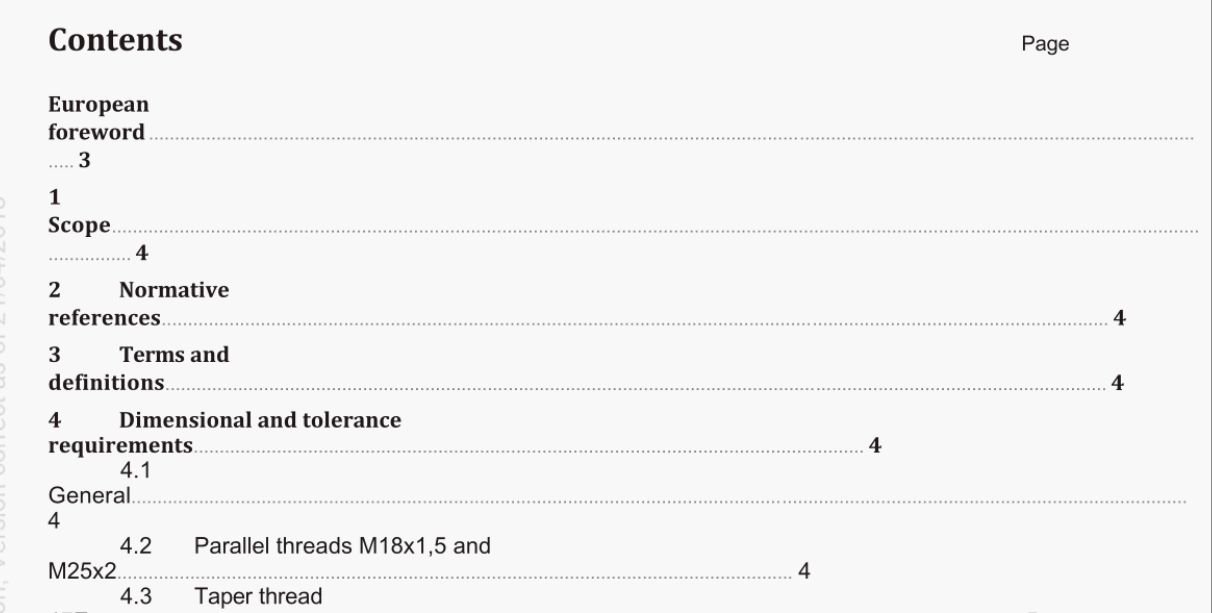BS EN 144-1:2018 pdf download.Respiratory protective devices – Gas cylinder valves
5 Impact resistance
5.1 General
The strength of the material of the connection between the gas cylinder and the cylinder valve shall withstand impact energy of(120+3)J. Two assembled cylinder valves excluding the activating means (e.g. hand wheels) shall be tested. Distortion due to impact and visual displacement of the sealing means of the valve inlet connection is permissible. After impact, the cylinder valve shall withstand a hydraulic pressure test and an internal tightness test. The total leakage [comprising that from the valve internal sealing system plus that from the threaded joint between the cylinder valve and the cylinder/test fixture) shall not exceed 180 cm3/h. Any leakage shall not result from cracking of the valve body. In addition the test sample shall remain capable of being opened for emergency venting purposes by hand or by using a simple tool or actuating connector (e.g a valve key).
5.2 Testing
The test sample shall be tested in the closed condition as specified by the manufacturer. The test sample shall be fitted into a steel gas cylinder neck, or a similar test fixture made of steel equipped with the corresponding screw thread (see Figure 1). The procedure to fit the test sample into the cylinder or test fixture shall meet EN ISO 13341 or shall follow the information supplied by the manufacturer. For the relevant thread and torque ranges, the minimum and maximum torque values, independent of the cylinder material used, shall be applied. One test sample shall be fitted using the minimum value and the second test sample using the maximum value according to EN ISO 13341 or as specified by the information supplied by the manufacturer. It has to be verified that the threaded joint between the test sample and the cylinder/test fixture does not leak before impact testing by using leak detection spray or other appropriate means. The test sample shall be vertically struck by an impact weight, tipped with a 13 mm diameter hardened steel ball. The impact weight shall have a minimum mass of 10 kg.
The impact shall occur at 90° to the longitudinal axis of the test sample and co-incident with a plane passing through the same axis. The point of impact shall be at two-thirds of the distance, L, from the plane where the valve inlet connection thread meets the cylinder [cylinder top] to the furthest point of the cylinder valve body excluding the valve spindle, measured along the longitudinal (valve inlet connection) axis of the cylinder valve (see Figure 1). Based on the cylinder valve design, the point of impact shall be unobstructed. Examples of obstructions include gauges, outlet connecting threads and pressure-relief devices. If the point of impact cannot be used (e.g. due to installed features), a different point of impact shall be chosen by rotation. If the point chosen by rotation is still obstructed, an alternate point of impact shall be chosen and the equivalent energy value and tolerance shall be calculated and applied. For safety reasons, the test sample remaining in the closed position shall be hydraulically pressure tested with a test pressure of 1,2 times working pressure. Water or another suitable liquid shall be used as test medium. The hydraulic pressure shall be applied via the valve inlet connection and gradually increased until the test pressure is reached. The pressure shall be maintained for at least 2 min.
BS EN 144-1:2018 pdf download
